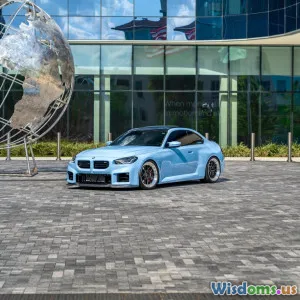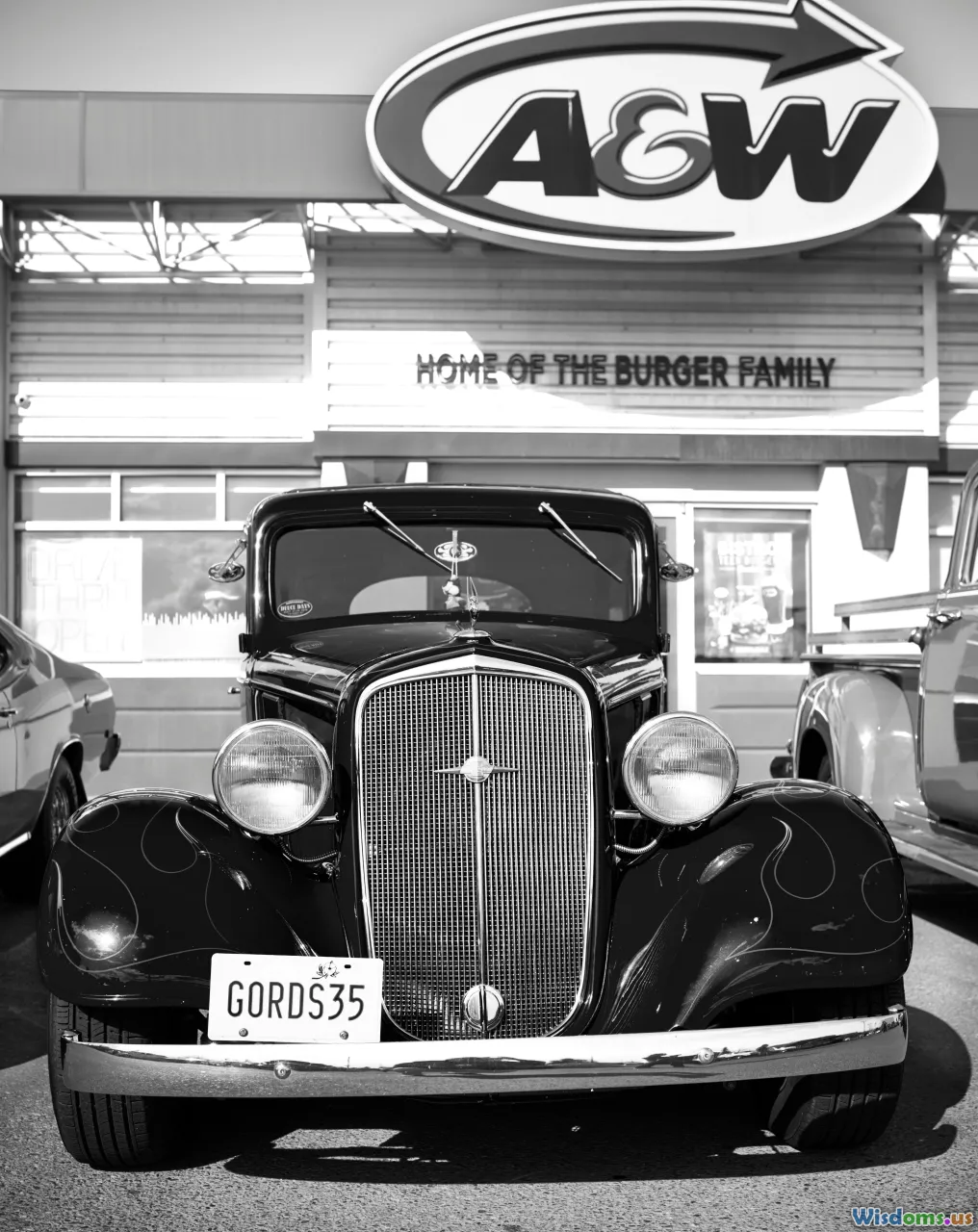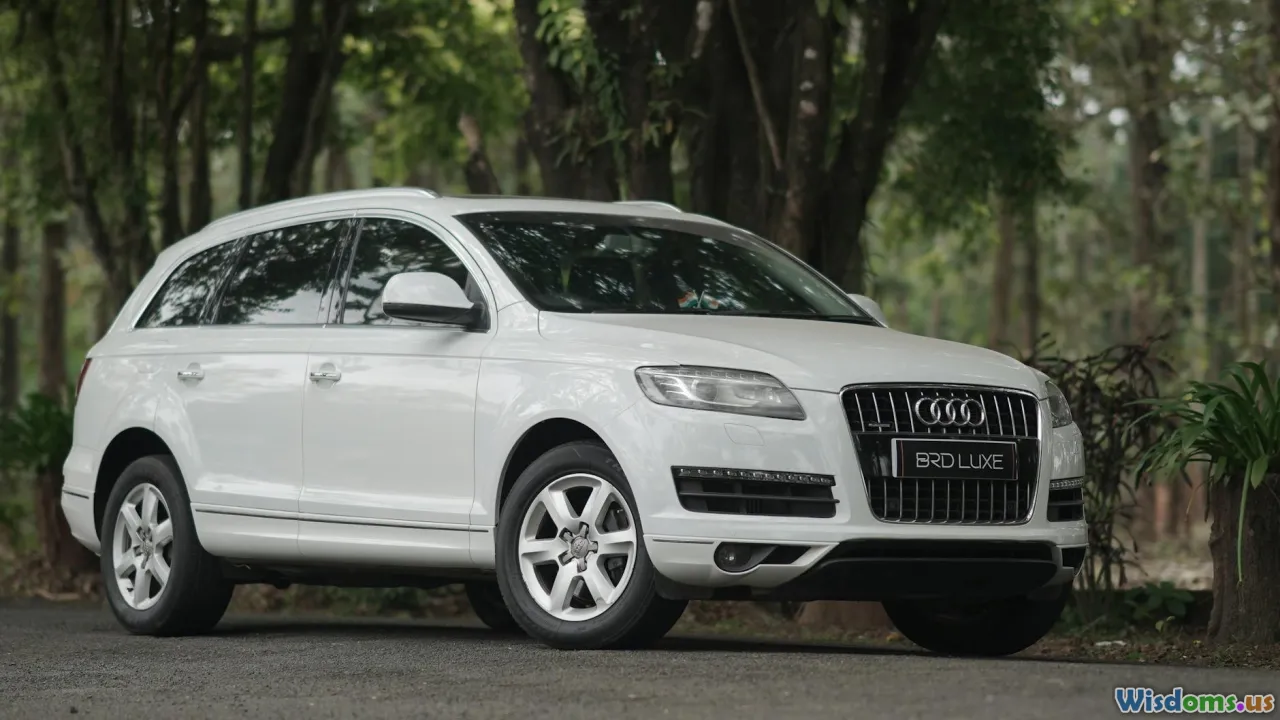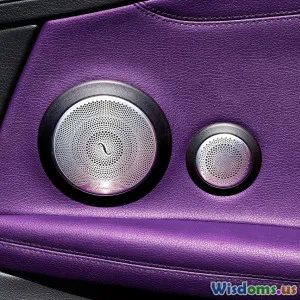
Which Countries Influenced Global Car Styles the Most
16 min read Explore the countries that have most influenced global car design, from Europe’s elegance to Japan’s innovation. (0 Reviews)
Which Countries Influenced Global Car Styles the Most
Few inventions have shaped the 20th and 21st centuries as profoundly as the automobile. From Henry Ford’s assembly lines that made cars accessible for millions, to Italian “rolling art” exhibited on racing circuits and in museums, the aesthetic and functional language of cars is written across continents. But which countries left their deepest imprint on the vehicles we drive today? Let’s take a road trip through time and place to discover the biggest influencers in global car style.
Pioneering America: From Utility to Mass-Market Glamour

The American chapter of automotive evolution begins in the dusty factories of Michigan, but its impact is truly global. The introduction of the Ford Model T in 1908 marked not just an industrial milestone but also a stylistic revolution. With its utilitarian 'tin lizzie' form, the Model T’s simple, robust lines expanded the very concept of what a car was: accessible, democratic, and built for daily use.
Assembly-Line Functionalism and Design
- Ford’s Assembly Line: By making vehicles affordable and standardized, the Model T established design conventions prioritizing practicality, reliability, and easy repairs.
- Chevrolet Bel Air & Cadillac Tailfins: Post-World War II, America’s booming economy fostered an era of excess—chrome, tailfins, and bold color palettes. Harley Earl, General Motors' legendary designer, combined jet-age aesthetics with American bravado.
Muscle Cars and Pop Culture The 1960s saw the rise of muscle cars—Ford Mustang, Chevrolet Camaro, and Dodge Charger—with aggressive, powerful silhouettes that echoed American pop culture, youth rebellion, and speed. These models didn’t just set trends: they created desires, influencing both international engineering and pop icons like James Bond's Shelby GT500 in “Diamonds Are Forever.”
Global Impact and Legacy American car style is the source of concepts like the family sedan, pickup, and the ubiquitous SUV. The Detroit-designed look of the mid-20th century became synonymous with car culture globally, inspiring imitations and homages from Australia (Holden) to Japan (Toyota's early Crowns).
Italian Automotive Artistry: Elegance & Emotion

Italy transformed automobiles from mere transportation into coveted works of mobile art. While American cars championed utility and mass appeal, Italians imbued vehicles with elegance and emotion, forging relationships with some of the world's most iconic marques: Ferrari, Lamborghini, Maserati, Alfa Romeo, and Lancia.
Coachbuilders and Carrozzeria Italian design is practically synonymous with the term coupé. Carrozzeria—small, often family-run design studios—created bespoke forms blending passion and performance. Brands like Pininfarina, Bertone, and Zagato crafted bodies whose influence reaches across the Atlantic and Pacific:
- Jaguar E-Type's Italian Inspiration: Malcolm Sayer's E-Type was said to marry British technology with Italian design panache.
- Pininfarina’s Global Consultancy: Their design partnerships extend to Peugeot, Cadillac, and even China’s BYD.
Defining Aerodynamics and Proportion The 1966 Lamborghini Miura, with its mid-engine layout and "cab forward" stance, shifted the proportions of the supercar forever. This innovation set a new standard for performance-oriented design, directly inspiring later icons like the De Tomaso Pantera and the Ford GT40.
Influence Beyond Luxury Even Italy’s humble city cars were style statements—think Fiat 500, the original Cinquecento. Simple yet unmistakably stylish, these small cars essentially founded the template for today’s chic city runabouts, cloned or echoed from Paris to Beijing.
Robust Innovation from Germany: Functional Precision and Technological Leadership

Germany’s signature contribution didn’t just rest in aesthetics but in the synthesis of style with technology and precision. Brands like Mercedes-Benz, BMW, Audi, Volkswagen, and Porsche became watchwords for well-crafted, performance-focused design.
Bauhaus Meets Autobahn German car shapes characteristically echo Bauhaus principles of "form follows function": unadorned, yet profoundly elegant. The Mercedes 300SL Gullwing (1954) remains a case study in aircraft-inspired minimalism, leading by how its doors opened, not just that they did.
- Volkswagen Beetle: Designed by Ferdinand Porsche, engineered at Hitler's behest, but later becoming an icon of peace and youthful freedom—few shapes are globally imprinted like its bubble-like silhouette.
- BMW's Hofmeister Kink: Subtle, yet defining. This rear window design element became shorthand for BMW’s identity and was imitated worldwide.
Safety and Innovation German manufacturers also pioneered an obsession for safety and engineering: Mercedes' anti-lock braking systems, Audi's quattro all-wheel-drive, and BMW’s driver-centric cockpits became global standards through their refined design execution.
Influence on Luxury and Everyday Cars What Germans engineered for autobahns trickled down: even entry-level cars worldwide now mirror Teutonic discipline in lines, cabins, and performance.
Japanese Resilience: Minimalism, Practicality, and the Democratization of Cool

Japan’s automotive influence often resides in how it transformed car consumption and style through the lens of minimalism and function. Brands like Toyota, Honda, Nissan, Subaru, and Mazda introduced designs that championed reliability, efficiency, and understated charm.
The Compact Revolution
- The 1966 Toyota Corolla and the Honda Civic upended the global order by introducing compact, fuel-efficient cars. Straight lines, “honest” forms, and clever space utilization became trademarks: the hatchbacks' popularity exploded in the US and Europe.
- Mazda RX-7 and Datsun 240Z showed how affordable sports coupes could still possess passion and beauty. Their style inspired a wave of imitators, not least the modern-day Hyundai Genesis Coupé.
JDM (Japanese Domestic Market) Influence The Japanese ethos of Kaizen (continuous improvement) redefined even performance vehicles, ultimately birthing the "JDM" (Japanese Domestic Market) cult among global car enthusiasts. Distinct design—pop-up headlights, boxy silhouettes (skylines and AE86s), flared arches—were sometimes quirky but always ahead of the curve.
Practical Designs Embraced Worldwide Japanese minivans, kei cars, and versatile crossovers prompted compact car design around the globe, with trends such as modular interiors and sliding doors adapted in models manufactured even in Western Europe and North America.
France’s Avant-Garde Edge: Sophistication & Nonconformity

French automakers rarely played by the rules, instead embracing boldness, comfort, and innovation—qualities that set the tone for seemingly whimsical, yet influential cars.
The Citroën DS Phenomenon Dubbed “La Déesse” (The Goddess), the 1955 Citroën DS stunned with its futuristic, ultra-aerodynamic body, self-leveling hydropneumatic suspension, and swiveling headlights.
- Enzo Ferrari himself considered it the most beautiful car ever made.
Peugeot and Renault: The Practical Avant-Garde The Peugeot 205 of the 1980s showed that mass-produced hatchbacks could be practical, safe, and fun—a style widely copied, evident in the VW Golf and Ford Fiesta lineages.
- The Renault 16 pioneered the hatchback—the now-universal architecture for compact vehicles.
Creative Luxury Even luxury models like Citroën SM (“Maserati-powered Citroën”) showcased a blend of French creativity and foreign engineering muscle, influencing models as far-flung as Maserati's own four-door Quattroporte designs.
The United Kingdom: Traditional Prestige and Eccentric Charisma

Britain’s car culture balances between stately tradition and playful innovation—a Jekyll and Hyde dualism echoed in its vehicles. From the Rolls-Royce Phantom to the Mini Cooper, the UK's design language has reverberated well beyond its shores.
Classic Grand Tourers and Roadsters
- The 1961 Jaguar E-Type combined Italian lines (itself inspired by the aerodynamic work of Sayer and his visits to Italy) with British sensibility, becoming a favorite of celebrities from Steve McQueen to Brigitte Bardot.
- Triumph and MG roadsters laid blueprint for open-top motoring experienced today in everything from Mazda MX-5 to BMW’s Z-series.
The Compact Revolution—Mini & Beyond The Iconic Mini, designed by Alec Issigonis in 1959, upended small car packaging with its transverse engine and front-wheel drive. Its cute, approachable shape became instantly recognizable worldwide—inspiring the rebirth of compact chic globally.
Luxury as an Artform
- Rolls-Royce and Bentley didn’t just define opulence; they set handcrafting, coach-building, and subtlety as markers of tier-leading luxury, influencing luxury car portfolios all over the world, including Mercedes' Maybach and the Cadillac Escalade’s interiors.
South Korea: The Rising Power of Contemporary Style & Affordability

South Korea’s presence in global auto style may be relatively recent but dramatic. The 1990s saw Hyundai and Kia pivot from basic transportation to design-led innovation, recruiting European designers and redefining value-driven aesthetics.
Affordability Meets Ambition
- Cars like the Hyundai Sonata and Kia Forte adopted sweeping, modern lines more reminiscent of luxury segments. Hyundai's "fluidic sculpture" language redefined the idea of what a budget-friendly sedan could look—and feel—like.
Electric Futures and Sustainability
- Hyundai Ioniq 5 and Kia EV6 fuse retro-futurism with clean minimalism, strongly influencing EV designs far beyond Asia.
Exporting Design as Strategy Rather than copying Western or Japanese templates, South Korea packages design as a global strategy, launching concept cars, production models, and even electric buses tailored to style-conscious audiences from Los Angeles to Lisbon. Their vehicles regularly win awards like the World Car of the Year, cementing Korea’s emerging influence.
Scandinavian and Nordic Touch: Simplicity, Safety, and the Green Revolution

While not producing cars in the colossal numbers of their American or Japanese peers, brands like Volvo and Saab left a profound mark in global design thinking through simplicity, ergonomic focus, and sustainability.
Holistic Safety First
- Volvo’s boxy sedans symbolized safety-first design, with pioneering features like the modern three-point seatbelt (patented in 1959 and made royalty-free to save lives globally).
- Interiors emphasized clarity, functionality, and quality—attributes now seen in countless brands’ cabins.
Eco-Friendly Leadership
- Volvo’s current fleet prioritizes electrification and eco-materials, positioning the company as a leader in the green car revolution. Their minimalist aesthetics influence many modern EVs, including the Polestar brand, Tesla Model 3 interiors, and even Chinese startups like NIO.
The Enduring Mosaic: Collaboration and Cross-Pollination

While countries stamped their signature style onto global car culture, today’s vehicles are collaborative artworks. Japanese-engineered cars wear American sheet metal; British luxury harnesses German engineering; Korean EVs borrow Italian cues. International auto shows in Geneva, Detroit, Shanghai, and Paris spur creative cross-pollination.
Examples of Global Co-Creation
- Fiat 124 Spider: Designed in Italy, produced in Japan (Mazda MX-5), and sold worldwide.
- BMW Z4 & Toyota Supra: Shared German and Japanese engineering under different badges.
- Smart ForTwo: Developed through collaborations between Daimler (German) and Swatch (Swiss).
A Living Language of Style Car design is a living, evolving language—borrowing and reinventing with each generation. Today’s EV revolution, aerodynamic performance, and digital cabins owe as much to history as they do to boundary-breaking new talent.
Globally, the most influential countries didn’t just transport us further—they inspired us to dream along the way. Whether you’re drawn to Italian flair, Japanese practicality, or American bravado, the world’s roads remain full of stories molded in metal and dreams made mobile.
Rate the Post
User Reviews
Popular Posts
















